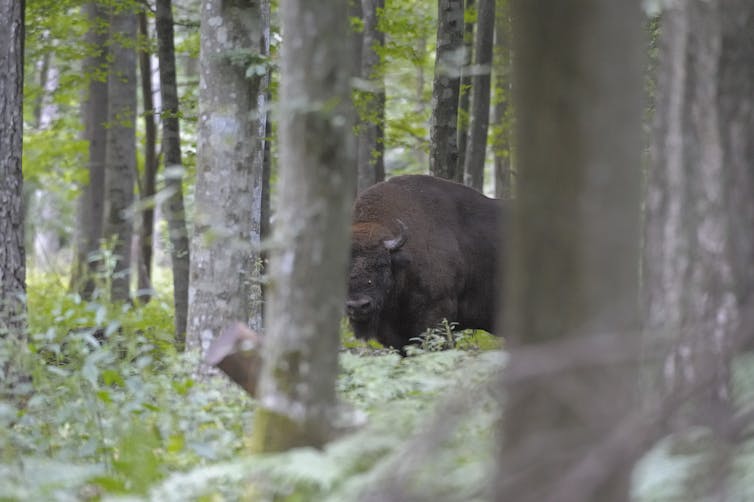Bison in the forest of Białowieża. © Magnus Elander
The Forest of Białowieża, which straddles the border of Poland and Belarus, is unique in Europe: it is incredibly ancient. Woodland has been continuously present there for some 12,000 years. With the protection of 6059 hectares from human disturbance within the Polish national park, as well as the return of its iconic European bison herds from the brink of extinction, the forest is widely regarded as a model for restoring biodiversity or “rewilding”, which areas across Europe are trying to emulate.
Human memories are remarkably short – often only a generation or so. What we remember as “natural” landscape is often what we remember experiencing as a child. This makes conservation and landscape management particularly subject to “shifting baseline syndrome” – a psychological phenomenon which describes how each new generation accepts as natural or normal the situation in which it was raised. This means that significant time depth is rarely considered in future planning. But understanding environmental change, and planning for the future impact of our species, must include a long-term perspective.
There are ways around this. Archaeologists such as ourselves are uniquely placed to understand how fluctuations in human activity can affect the environment over much longer time periods. It is well known, for example, that our species’ mastery of farming enabled our populations to grow, with resulting deforestation and loss of biodiversity. This can be mapped through pollen coring, and the study of archaeological plant and animal remains. These techniques have become more precise in our lifetime, especially with advances in radiocarbon dating.
Read the rest of this article...

No comments:
Post a Comment